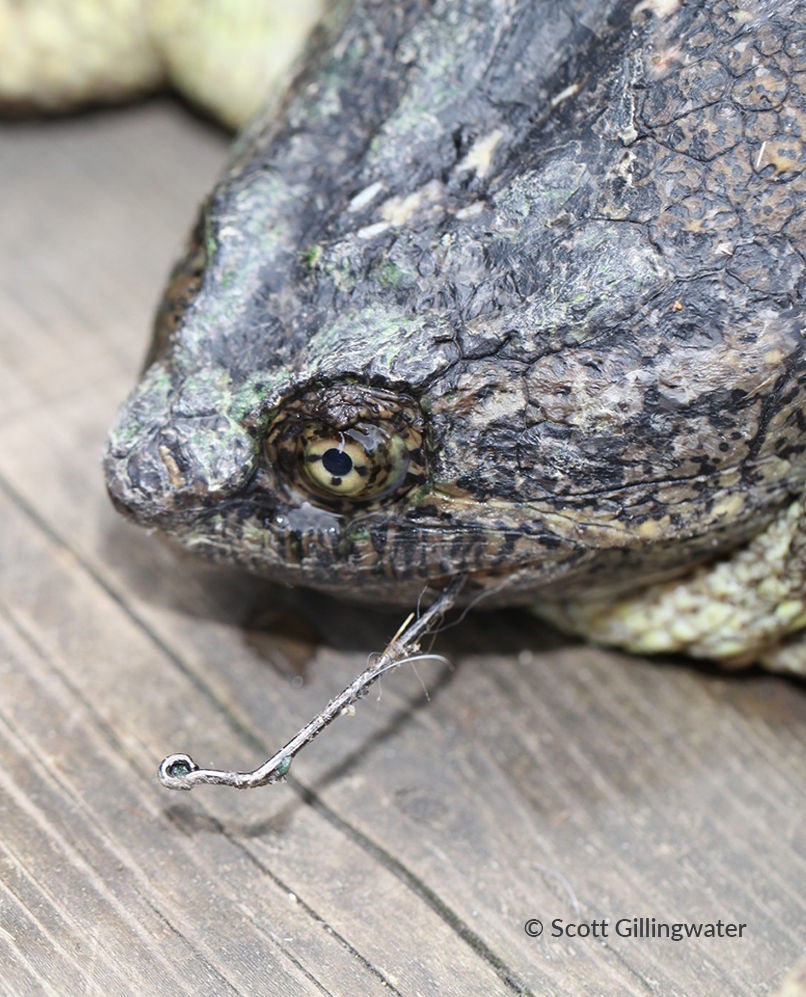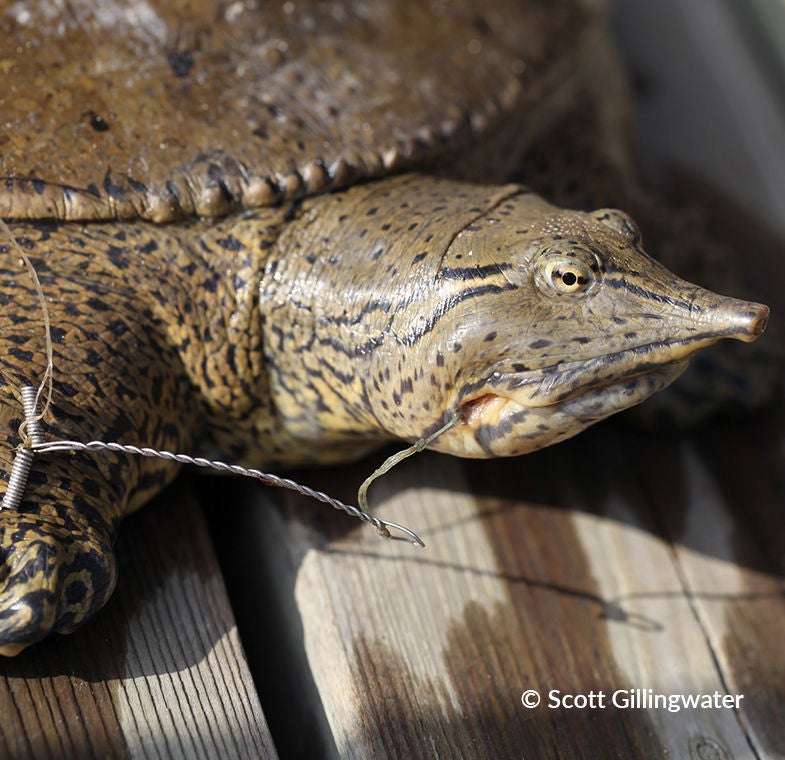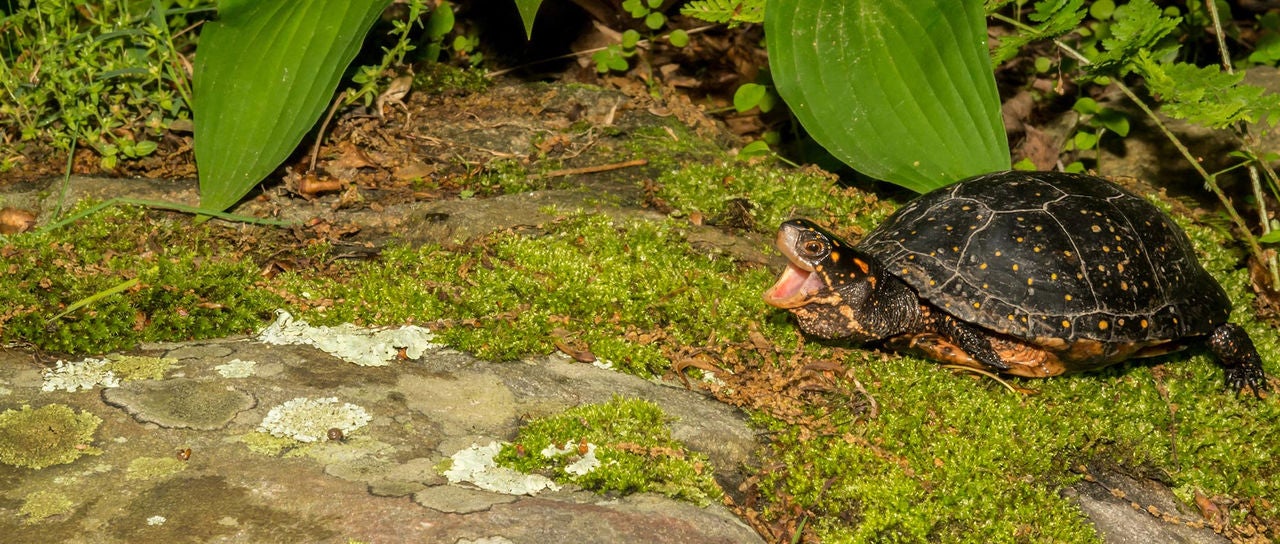Freshwater turtles in Canada face many threats. Habitat loss, such as the draining of wetlands, and traffic mortality are two of the biggest threats to freshwater turtles in Canada. As a result of these and other threats, all eight species of freshwater turtles in Canada are listed as Species at Risk by the federal government as of 2018.
Another widespread threat is the accidental hooking of turtles on fishing lines. Many freshwater turtles are opportunistic scavengers that also take live prey, making them vulnerable to getting caught on baited fishing hooks. Often anglers will simply cut the fishing line when a turtle is hooked, so the hook remains caught in the turtle.
Some hooks get caught in the mouth of the turtle, which can making feeding difficult. Other hooks are swallowed and lodge in the throat or even the stomach, which can be fatal. Even if the fishing hook does not kill the turtle, there is also the risk of lead poisoning if lead sinkers are also swallowed.
Studies suggest that turtles getting hooked is common and widespread. Snapping Turtles are often hooked the most, likely because of their size, their widespread nature, and their feeding behaviour. Other Canadian species known to get caught on fishing hooks include the Northern Map Turtle, Painted Turtle, Spiny Softshell, and Wood Turtle.


Why is This an Issue for Turtles?
The life history strategy of turtles differs from those of most mammals. Turtles have very high rates of egg and hatchling mortality, but that is balanced out with very low rates of adult mortality. Adult females keep laying eggs, year after year, for decades.
This strategy has worked well for turtles for over 200 million years. If the adult mortality rate of turtles increases by only a few per cent per year, however, it can lead to populations declining over time. In a population of 100 turtles, the annual loss of even two or three adults will cause the population to slowly decline and possibly be wiped out completely. Modelling studies suggest that ingesting fishing hooks alone can cause enough mortality to result in population declines for some freshwater turtles.
Angling is a great activity that gets people out into nature, and we are not against fishing. Consider using barbless hooks when fishing in areas with large turtle populations to make hooks easier to remove. If you do hook a turtle while fishing there are a few things that can be done to help the turtle.

What More To Do if You Hook a Turtle?





Who Do You Call?
- British Columbia:
Vancouver Island: MARS Wildlife Rescue Centre (250) 337-2021 or BC SPCA Wild Animal Rehabilitation Centre (855) 622-7722
Lower Mainland: Wildlife Rescue Association (604) 526-7275
Interior BC: BC Wildlife Park (Kamloops) (250) 573-3242
Manitoba: Wildlife Haven Rehabilitation Centre (204) 878-3740
Ontario: Ontario Turtle Conservation Centre (705) 741-5000
Quebec: Parc de la Rivière-des-Mille-Îles (450) 622-1020 ext. 286
Atlantic Canada: Atlantic Wildlife Institute (506) 364-1902

